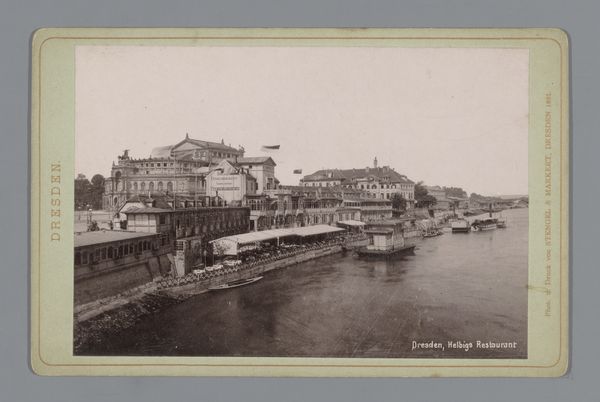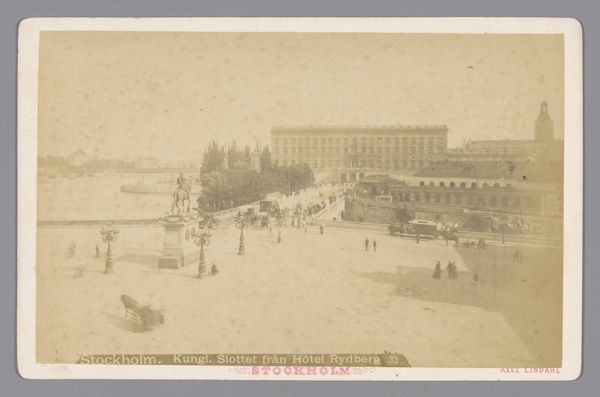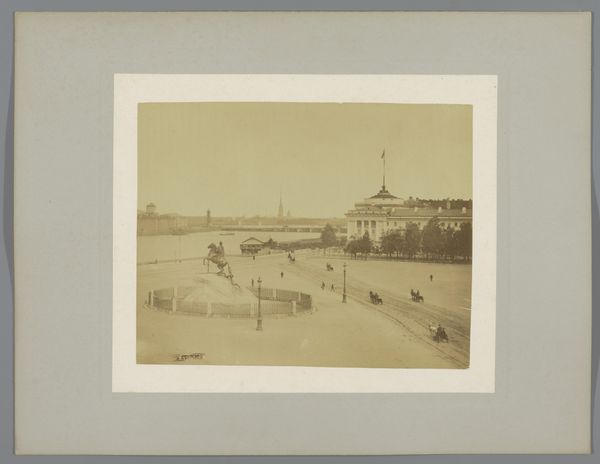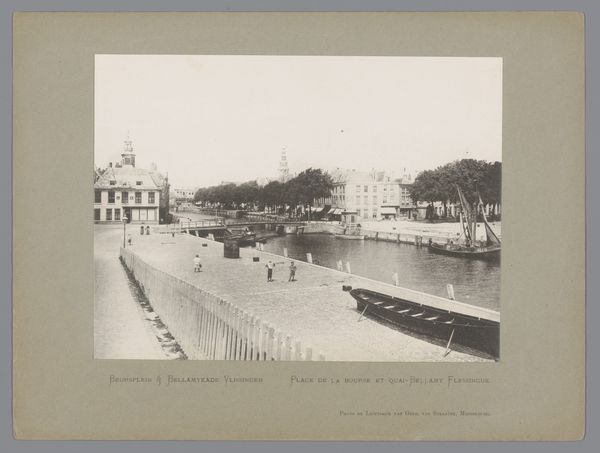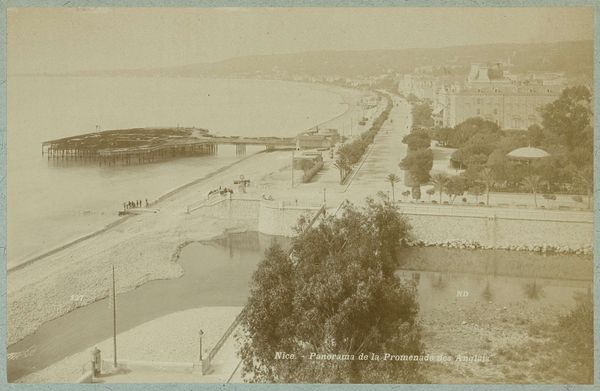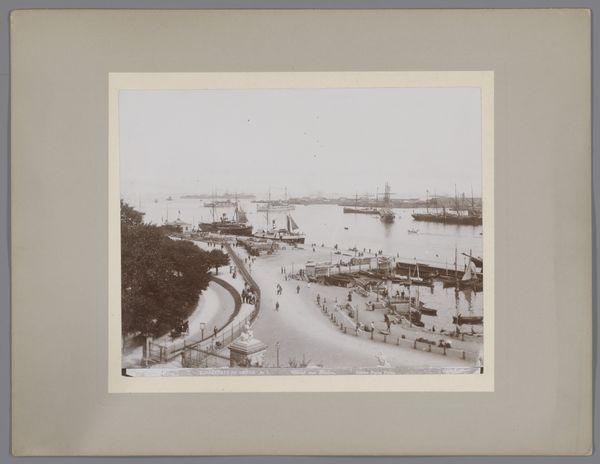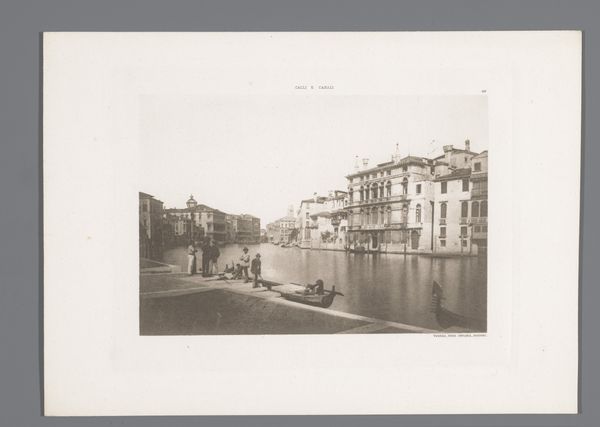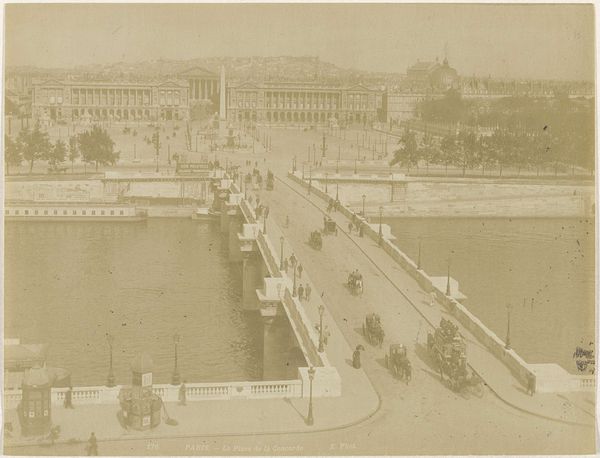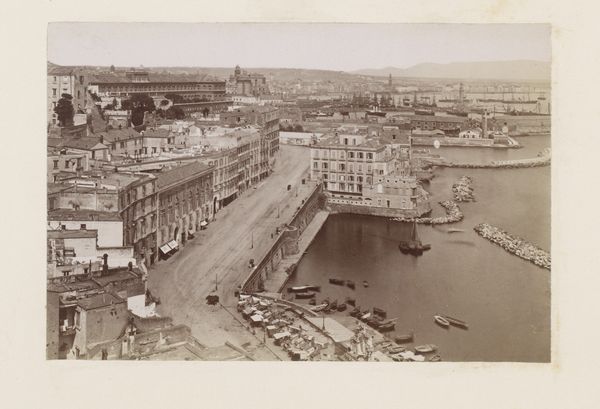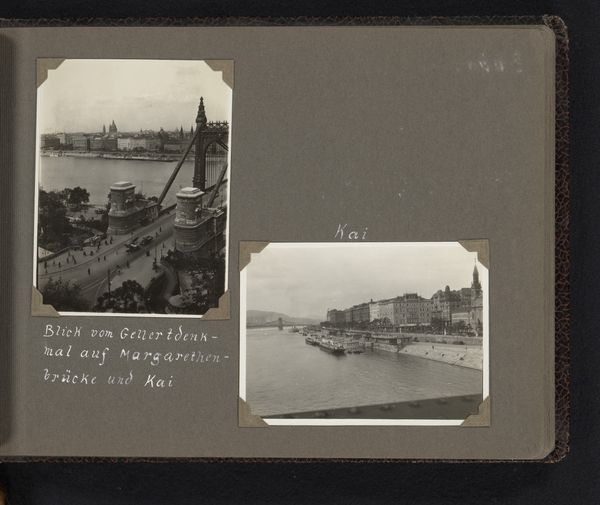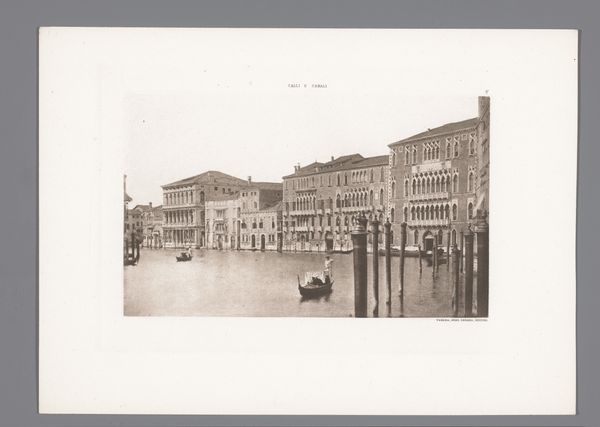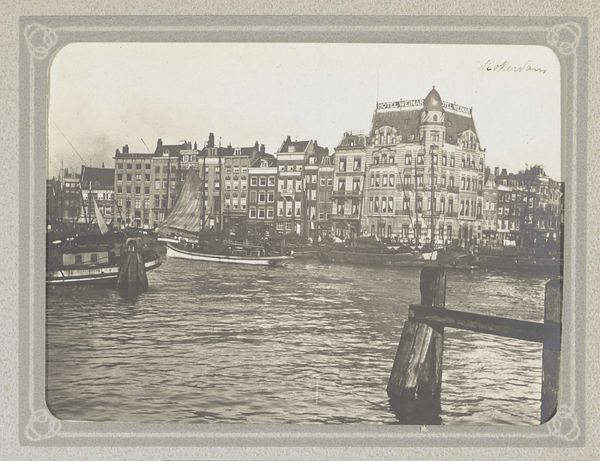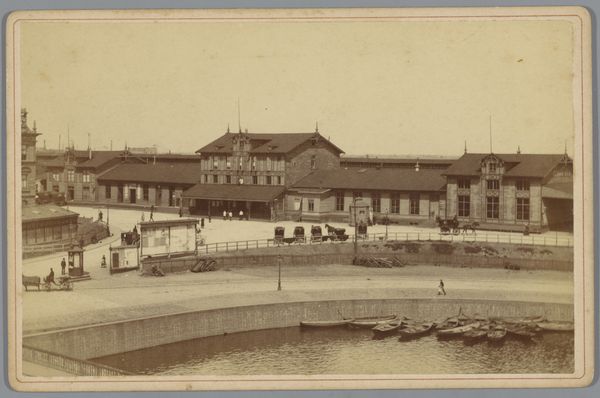
photography
#
pictorialism
#
photography
#
cityscape
Dimensions: height 94 mm, width 157 mm
Copyright: Rijks Museum: Open Domain
Curator: This evocative cityscape is "Gezicht op Stockholm met de Vasabron en het Strömsborg," a photograph taken circa 1890-1895 by Axel Lindahl. Editor: It’s bathed in a warm, almost sepia tone. The bridge dominates the foreground, leading our eye into the distance, towards those impressive buildings. It's very orderly, very composed. Curator: Indeed. Lindahl's work here fits into the Pictorialism movement, which aimed to elevate photography to the status of fine art. The focus on soft focus and tonal manipulation was key. Look at how the buildings soften in the distance. It's less about perfect clarity and more about an emotional impression of place. Editor: Exactly! The composition emphasizes power. You have this very clear, intentional infrastructure in the foreground. Who has access? What are they doing on that bridge? Also the light—its romantic presentation feels intentionally constructed, masking labour and access issues to construct this idealized image of urban life in Sweden. Curator: These kinds of commissioned city views were often tied to civic pride and the marketing of urban progress. Showcasing infrastructural developments such as bridges spoke to a city's modernity and connectedness to other regional urban hubs, further embedding Stockholm in a web of interconnected and developing global markets. Editor: But let's also remember that Pictorialism, while aesthetically beautiful, also tended to idealize or even sanitize urban landscapes. It's presenting a selective reality. Where are the marginalised communities, the unseen labor, and environmental impact of that progress? Curator: An important counterpoint! Reflecting on how these images shaped perceptions of urban life for those both inside and outside Stockholm provides much needed nuance. This helps unpack the layers of meaning imbued in seemingly simple snapshots. Editor: It makes me want to ask whose stories aren’t being told in this beautifully composed photograph? To whose benefit are images like this created and widely distributed? Curator: Questions, certainly, that provide the social context for us to think about as we enjoy the picture’s beautiful, and meticulously crafted aesthetic.
Comments
No comments
Be the first to comment and join the conversation on the ultimate creative platform.
